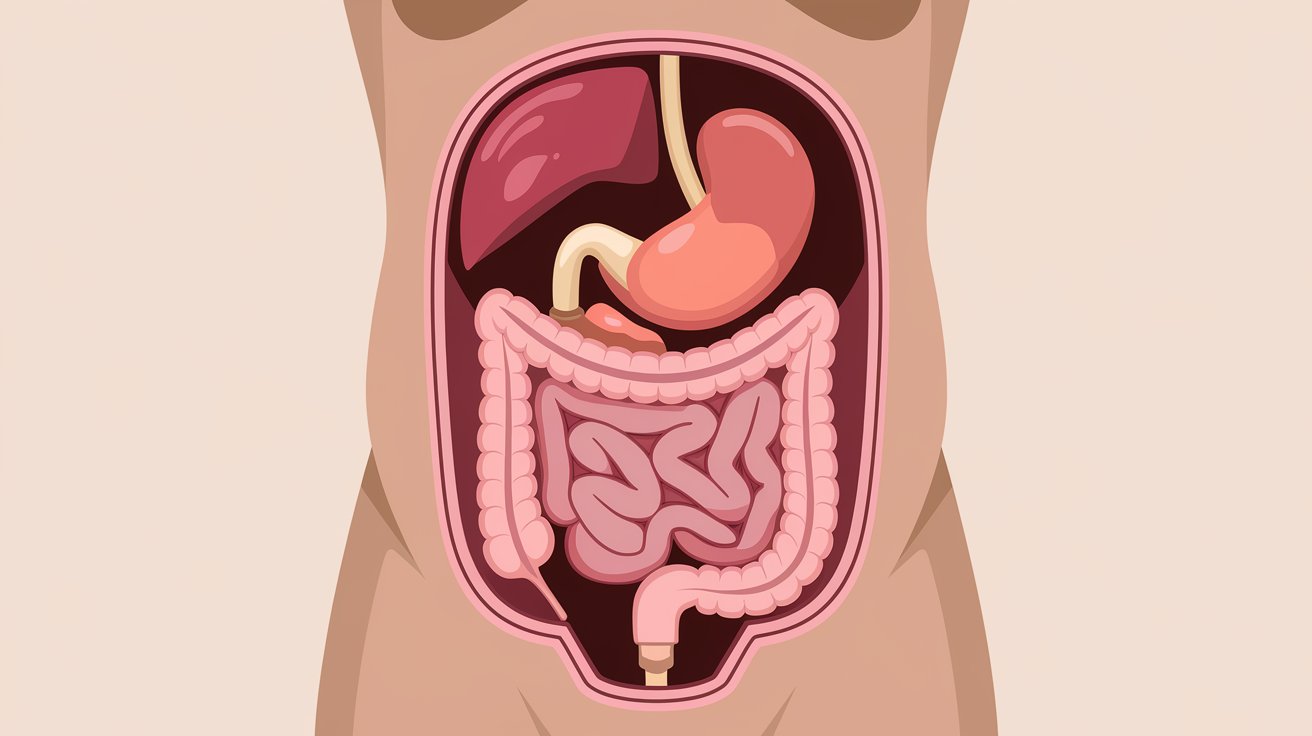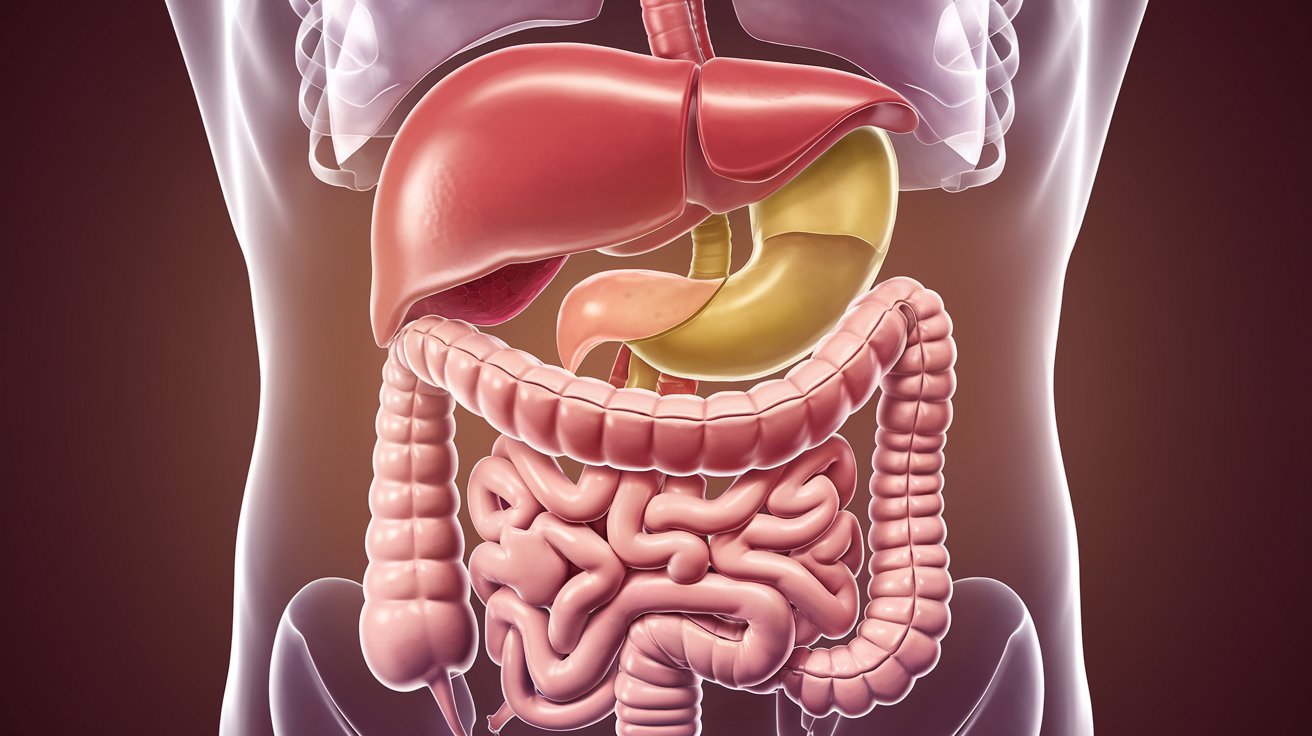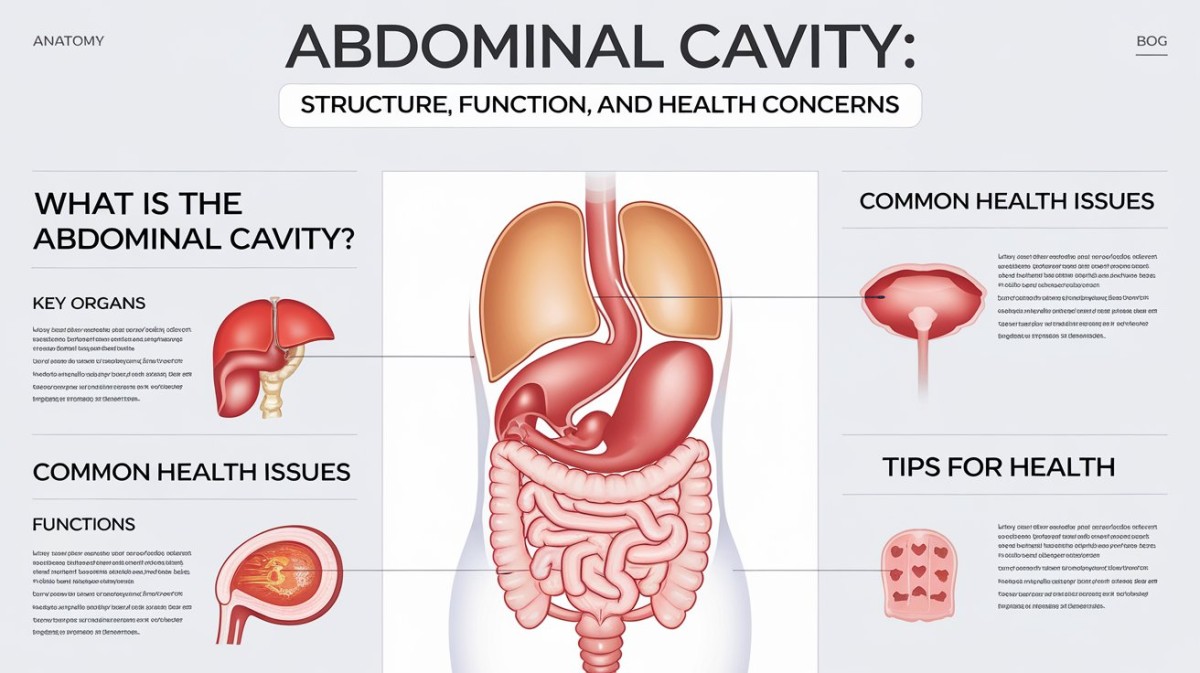The abdominal cavity is one of the biggest cavities in human bodies, and highly regarded for its roles as a protector of organs. Whether one is interested in the structure, or the health consequences related to this area, it is paramount to understand more about the abdominal cavity in order to fully understand this in life. In this blog, I will explain what consists the body part, the organs within, its function or role, and some major diseases associated to the body part.
What is the Abdominal Cavity?

This is the largest cavity in the human body and is positioned just below the diaphragm and covering down to the pelvic cavity. It is closely related to the thoracic cavity but is what divides it: the diaphragm which is a partially smooth muscle causing inhalation and exhalation of air. This cavity contains several large organs, which are important for functions such as: digesting foods, metabolising substances and breaking down toxin into waste products.
The organs within the abdominal cavity are surrounded by a membranous covering known as the peritoneum which is a thin smooth glossy tissue layer which secretes a little bit of fluid to minimize abrasion between the abdominal organs as they shift. This makes it easier for organs to slide within the cavity for instance during breathing or swallowing.
Key Organs in the Abdominal Cavity

The abdominal cavity contains many vital organs, each contributing to essential bodily functions:
Stomach:
The stomach is an organ of digestion situated in the superior half of the abdominal cavity. It mechanically and chemically reduce the solid food into a soft-semisolied state known as chime discharge further into the intestines.
Liver:
The liver is one of the biggest organs and is responsible for; removing waste product from the blood, producing bile that aids in digestion of fats, storing of energy in the form of glycogen.
Gallbladder:
Located on the right side of the abdomen beneath the liver, its principle function includes the storage of bile and concentration with subsequent release into the small intestine for the purpose of digestion of fats.
Small Intestine:
The small, intestine is the widest part of the gut and contains the majority of the secretory and absorptive functions. It is divided into three sections: The relative parts are, the duodenum, jejunum and ileum.
Large Intestine:
The stomach maintains an important role because in large intestine most ISOs, water and electrolytes are also absorbed so that the remaining undigested food in the form of feces is eliminated by the body.
Pancreas:
It secretes substances we use in digesting foods and hormones such as insulin, which control sugar level in the blood.
Kidneys:
Sited in the inferior quadrant of the human’s back, kidneys work as the filtering system of the blood severing to eliminate wastes and fluids that coagulate to form urine.
Spleen:
Now share the spleen involved in digestion and cannot filter the blood and helps produce white blood cells which fight diseases in the body.
Functions of the Abdominal Cavity

The organs situated in the abdominal cavity and co-relatively carry out several vital functions in the body. The main functions include:
Digestion and Absorption:
Gastritis and enterprise are responsible for digestion of food, absorption of nutrients as wel as excretion of body waste products.
Metabolism and Detoxification:
Liver is a place where nutrients enter and fats, proteins and carbohydrates are metabolised from and toxic contaminants are eliminated.
Blood Filtration:
These parts of the body regulate the amount and type of blood flow through the body, filter out waste products, and keep the body hydrated, and healthy .
Common Health Issues Related to the Abdominal Cavity
Considering the fact that organism has a relative plenty of vital organs and tissues, the abdominal cavity is frequently pathogenic. Below are some of the most common issues:
Abdominal Pain:
A sign not a disease, abdominal pain can be described as an ache, a discomfort or actual pain. It could be due to minor things such as stomach upset and flatulence, or more severe conditions inclusive of appendicitis or renal calculi.
Hernias:
A hernia is a condition in which an organ or part of the body protrudes through a hole in the surrounding muscle wall, causing a bulge. Hernias can be as a result of lifting heavy materials, obesity, or from a persistent cough.
Inflammatory Diseases (e.g., Crohn’s Disease):
Such diseases as Crohn’s disease or ulcerative colitis are characterized by constantly aggravated inflammation of the intestinal tract, accompanied by such signs as pain, diarrhoea, and weight loss.
Liver Diseases (e.g., Cirrhosis, Hepatitis):
Some of the diseases that may affect the liver include cirrhosis which is a scaring of the liver tissue, hepatitis and fatty liver. Finally, these can affect the liver function and if not well treated would lead to severe complication.
Kidney Stones:
Kidneys stones can be described as solid concrements that form through mineral compounds in the urine. Small kidney stones are usually cleared from the body naturally but large ones may need treatment.
Gallstones:
These are motionless deposits that are formed in the gallbladder; when they within the bile duct they cause pain, nausea, or infection.
Peritonitis:
A form of periarthritis, peritonitis is the inflammation of the peritoneum resulting from infection within the abdominal cavity. It is a heath issue that needs to be resolved as early as possible.
Tips for Maintaining a Healthy Abdominal Cavity
It’s for this reason caring with the organs located in the abdominal cavity is essential in maintaining their health. Here are a few tips to promote abdominal health:
Eat a Balanced Diet:
Consuming fruits and vegetables, whole grain products and lean protein foods contribute immensely to good digestive health and the general wellbeing of the body.
Stay Hydrated:
If one drinks enough water, the body prevents constipation and does not form kidney stones besides helping in digestion.
Exercise Regularly:
Physical exercise aids digestion, it has been seen that frequent episodes of obesity cause hernias and finally, regular exercise will improve general abdomen fitness.
Avoid Excessive Alcohol Consumption:
They agreed that alcohol in excess is harmful to the liver, it causes cirrhosis or fatty liver disease. Prolonged standing can cause these conditions, although moderation is the solution.
Monitor Abdominal Symptoms:
It is important not to take occasional discomfort, or constant bloating and changes to bowel habits lightly. If some problems, such as gallstones or hernias, are considered in their early stages or during the early stages of diabetes, they can be treated to avoid complications.
Conclusion
Abdomen is a central hollow in the human body in which a number of essential organs are placed and shielded. Knowing its anatomy and physiology enables us to see how the human body can facilitate simple processes of digesting food and exercising to more complicated functions such as filtering out wastes and maintaining a body’s fluid balance. Yet, the abdominal cavity is also vulnerable to a number of ailments, including but not limited to, simple gastrointestinal disorders and complicated diseases such as liver disease and hernias. This means that by practicing proper lifestyle and reporting any odd signs and symptoms, the abdominal cavity and all the organs in it can be kept healthy.
A healthy abdominal cavity is not kept healthy not to mention of some illness, but so that the body’s some of the most relevant systems can function efficiently.

